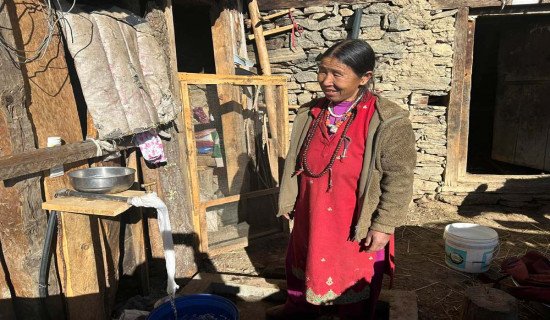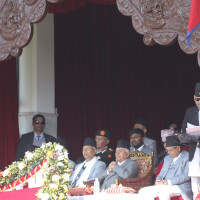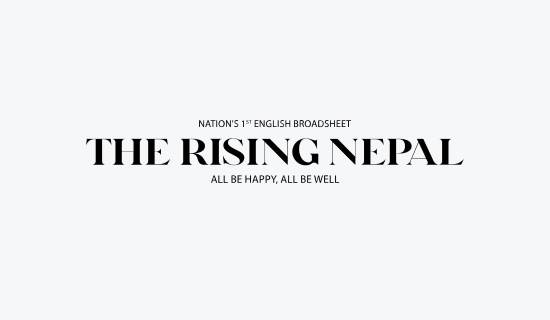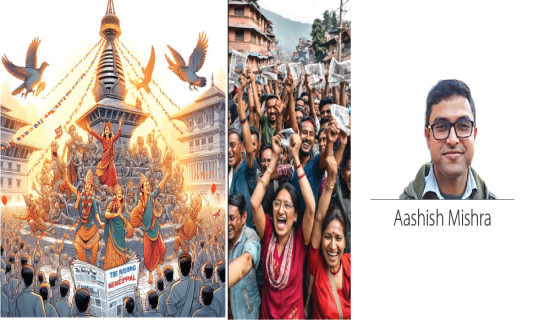- Monday, 15 December 2025
Federalisation Of Nepali Media
While many may take it for granted today, Nepal and Nepalis fought a lot to establish the federal democratic republic system of governance. The Interim Constitution of Nepal, 2007 officially abolished the monarchy and made Nepal a republic but there were still a lot of doubts about its sustainability. There were forces at play seeking to overturn the achievements of the two people’s movements and the decade-long People’s War and the near-constant wrangling and infighting made it look like the major political parties had lost their commitment to the people. But, putting all suspicions to rest, Nepal institutionalised federalism through the adoption of its new constitution in 2015.
While the average citizen of this nation deserve the most credit for standing firm in the face of adversity, taking the forces of regression head-on and not flinching for even a minute to make great sacrifices for their nation, the role the media played in supporting and strengthening the people must also not be overlooked.
But also worth analysing is the state the media acquired after the country’s federalisation. The interim constitution ended the period of tyranny that was King Gyanendra’s so-called “direct reign” and guaranteed press freedom. The Constitution of Nepal 2015 furthered that freedom and built on Nepal’s past experiences to ensure that journalism could never be stifled again. This allowed our media sector to undergo a federalisation of its own, embrace the diversity of the Nepali society and bring forth the perspectives of people and places that the centralised establishment of Kathmandu had always neglected. Nothing illustrates this point more than the growth in the number of newspapers, radio stations and TV channels.
Let us remember that up until the early 2000s, Nepal had less than a hundred newspapers and a handful of TV channels. Community radios had made the radio scene vibrant but the Maoist insurgency and the palace’s paranoia had eroded much of their early promise.
Let us remember that up until the early 2000s, Nepal had less than a hundred newspapers and a handful of TV channels. Community radios had made the radio scene vibrant but the Maoist insurgency and the palace’s paranoia had eroded much of their early promise. But now, we have 7,874 newspapers and magazines, as per the Press Council Nepal’s annual report for the fiscal year 2020/21. Similarly, according to the data of the Department of Information and Broadcasting, we have more than 700 licensed FM radio stations and more than 150 television channels. Nepal also has well over 2,500 online news portals.
These media outlets are spread all over the country and cater to audiences in all seven provinces of Nepal. They also present diverse content focused on issues that truly impact the lives of the people instead of just the politics of the capital.
Space for marginalised voices
With power moving from Kathmandu to the provinces and the local levels, so has the media’s attention. And in the process, it has now also started looking at the issues that affect the lives of the people living outside the capital. The news of a poor man from Bara scapegoated in a tax evasion case or a prisoner-for-hire business in operation in Rolpa makes front-page news in national dailies.
And not just bad news but good news from these places also gets covered. Often, the western media make the non-western countries look like hell, only covering deaths, conflicts, poverty and disasters. This is exactly how Kathmandu-based media used to treat the peripheral districts of the country. But now, things are changing and stories of development and progress are also covered. It is as if after federalism, the media realised that good things can happen in places outside the capital too and that Kathmandu could learn a lot from the other 76 districts of the country.
Tokenism or genuine inclusion?
For centuries, the power structures in Nepal were dominated by Hindu, Nepali-speaking, oft upper caste, Hillmen. After the abolition of the monarchy, though, people began calling for change. As one of the pillars of democracy, the make-up of media organisations was also scrutinised and groups called on them to give more space to indigenous and marginalised groups in their newsrooms and news content. 14 years later, though, we can see very little change.
A media still has to be Kathmandu-based and Nepali language-focused for it to be considered “national” and “mainstream.” Those disseminating news in other languages of the country or those headquartered in other parts of the country is given the status of “regional” or “ethnic.” Women, indigenous nationalities, Dalits and oppressed communities still do not have much representation in newsrooms and almost none at the decision-making level. We can see some diversity in content, as mentioned above, but closer scrutiny is required to determine if they are genuine inclusion or tokenistic symbolism.
Decentralisation of governance
One of the reasons Nepal’s media is concentrated in and around Kathmandu Valley is because the state apparatus governing it used to only be present in the capital. Journalists needed to mandatorily come to the Department of Information in Kathmandu to obtain their press passes and the media houses needed to have representatives in Kathmandu to access government services and facilities.
But that is now changing. Provinces are beginning to set up their own media coordination bodies, eliminating the need for media organisations and personnel to mandatorily be present in Kathmandu. Province 1, for instance, had a Communication Academy before it was dissolved last year. Madhes Province has two bodies – a Media Council and a Mass Communication Authority. Bagmati has set up an Office of the Communication Registrar and Lumbini has an Information and Communication Technology Academy.
Onus on media
The country has now well and truly adopted federalism. We have had two local elections under this structure and before the end of the year, we will have elected our provincial and federal governments as well.
It is up to the media to now transform itself to fit this changed context and become a true representative of the country and its citizens. Otherwise, they will become irrelevant. Nepali media seem to have understood this and have begun taking steps towards “federalising” itself but much remains to be done.
(Mishra is a journalist at this daily)














